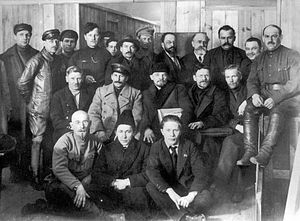Weekend Central Asia reads and some music too:
Stalin’s Secrets: Historians looking into Russia’s Soviet past, particularly the Stalinist period, continue to have trouble getting access to the archival documents they need. As a recent article on Meduza details, despite nominal declassification, historians find the reality of accessing old government files tremendously difficult. Igor Kurlyandskii, a senior researcher at the Institute of Russian History at the Academy of Sciences, is looking into early Stalinist religious persecution during collectivization but is unable to gain access to records now nearly 90 years old. For another historian, Sergei Prudovskii, his research is more personal. Prudovskii’s grandfather worked on the Chinese-Eastern Railroad, the KVZhD. In 1937, the Soviet Union authorized the arrest and persecution of those who had worked on the railroad and in 1935 when the Soviet Union sold the KVZhD and had reemigrated–more than 30,000 were said to have been shot, their families marked as relatives of traitors. The Soviet Union’s subsequent leaders dismantled most of Stalin’s repressive policies, Nikita Khrushchev denounced him in 1956, but Stalin has experienced something of a revival in modern Russia.
Blogging Zhanaozen: In an excellent article in Central Asia Survey (free access here) published earlier this year, David Lewis of Exeter, notes that the “most fascinating feature” of post-Soviet politics is not the so-called color revolutions, but the noticeable resilience of authoritarian political systems. Lewis focuses on Kazakhstan and the “ability of the regime to construct a convincing, hegemonic discourse that is internalized by key social groups and contributes to regime legitimacy.” Less academically put: Astana has an established, clear narrative that reinforces the state’s control and has been picked up across society.
New communications technologies that have been used by dissidents around the world to speak up against repressive states have also been mastered by authoritarian states. Lewis argues that Kazakhstan has developed a narrative–emphasising stability and linking that stability to Nazarbayev–and operationalized that through new technologies. Following the 2011 Zhanaozen incident–which serves as mini case study in the paper–the Kazakh government invited several well-known bloggers to the city. Their “accounts contained criticisms of the authorities, but overall the blogs provided a useful tool for the government, supporting their framing narrative about the events, discounting more lurid and damaging accounts, and maintaining important aspects of the state legitimacy discourse.”
A Central Asia Crooner in the Making: On July 2, Kyrgyz President Almazbek Atambayev released his first song on YouTube. Titled “In Spite of Fate,” the gentle Russian-language tune is introduced by Atambayev. EurasiaNet’s description cannot be beat:
“This is one of my first songs,” Atambayev drawls lugubriously in the intro, as if addressing a captive audience at an intimate acoustic set. “It is like a motto for me. This song helped me to beat a path through all the difficulties that befell me in life.”
A few days later, a second track appeared online. “I Cannot Live Without You,” is a similar Russian-language tune that features Atambayev crooning over a plodding guitar refrain. Both videos sadly lack the president whose term is up in 2017, and are set instead to scenes from iconic Soviet-era films: Provincial Romance and 1968’s Once Again For Love (available in full on YouTube).
According to RFE/RL’s Kyrgyz bureau, Atambayev intends to release a 10-track album ahead of his 60th birthday on September 17. He record five Russian-language tracks in June and plans to record the final 5 tracks–in Kyrgyz–in August.
The Steppe to Waikoloa and Back: Paul Dahlquist, a cultural anthropologist from Hawaii, will be traveling with his family to Kazakhstan later this month. One of Dahlquist’s ancestors–a great-great-grandfather to be exact–was English architect and traveler Thomas Atkinson. Atkinson, among other places, traveled to Kazakhstan and his wife (there’s a plot twist here, but read that on West Hawaii Today) gave birth to their son at a spring in the Alatau mountains. They named him Alatau Tamchiboulac Atkinson and 1869 he moved to Hawaii to run St. Alban’s College (now the ʻIolani School, a prep school in Honolulu).
Kazakhstan has trotted out this globe-spanning saga before as Atkinson’s descendants look to reconnect with their adventurous ancestry. It’s a very small world, indeed.

































